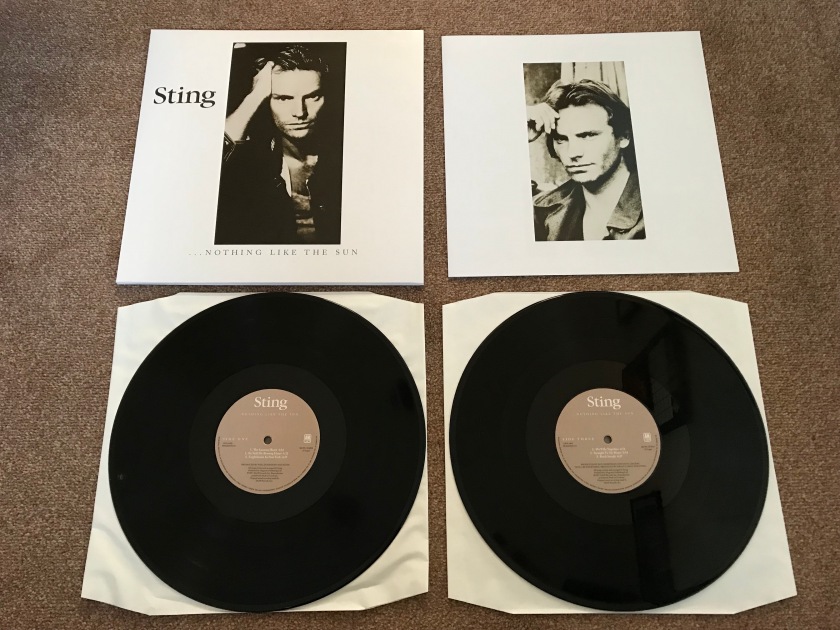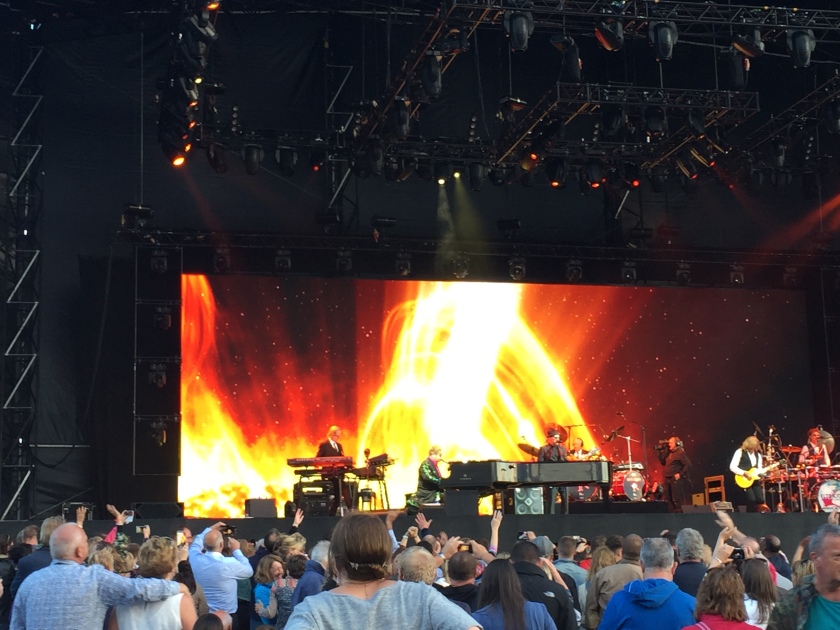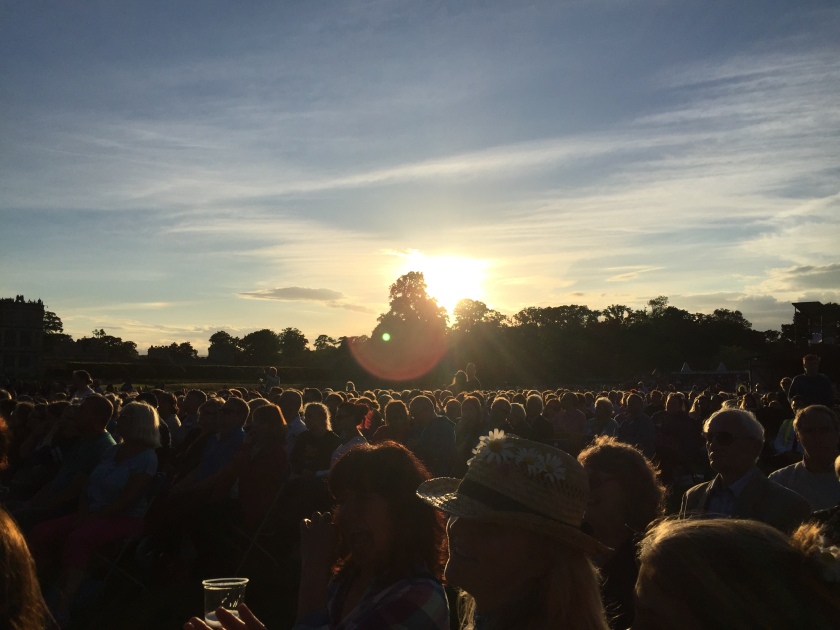“I was accosted late one night on Highgate Hill by a staggering drunk who grabbed me by the lapels and, after tranquillising me with with his foul breath, pointed to the moon which was swollen in its fullness and demanded of me threateningly, “How beautiful is the moon? … How beautiful is the moon?” he repeated. Thinking quickly and not wishing for an early toxic death, I fixed him with my eye and declaimed, “My mistress’ eyes are nothing like the sun.” Shakespeare is always useful I’ve found for calming down violent drunks if only because it gives them the impression that you’re crazier than they are. “A good answer …” he said. “A good answer” as he set off on a tack for Kentish Town like a listing Galleon.”
Yes. Well, inspiration does come from the strangest places. Sting does seem to have a certain level of fascination with Shakespeare as a number of his songs over the years have featured lines borrowed from various works by the Bard. And why not? As Sting himself has remarked, the man is hardly in a position to complain. ‘Consider Me Gone’, for instance, features lines adapted from Sonnet #35. Here, a line from Sonnet #130 found its way onto a sultry number entitled ‘Sister Moon’ and gave Sting’s second solo studio album its title – …Nothing Like the Sun – a number one album which celebrated its 30th anniversary in October this year.
‘Sister Moon’ was an appropriate choice as a title track. It has a reflective feel, and its themes of women and motherhood are something that recurs on a number of songs on the album. Opening track ‘The Lazarus Heart’ and the politically charged ‘They Dance Alone’ both share those themes. Indeed, Sting’s mother sadly passed away during the making of …Nothing Like the Sun. The album is dedicated to her, and this may well have contributed to its more reflective moments.
All of which brings us neatly onto the first single lifted from the album; ‘We’ll Be Together’. This song is not ‘reflective’ in any way. It is a completely over-the-top, somewhat frivolous synth-fest which, although good fun, sticks out like a sore thumb within the context of the rest of these songs. Originally, Sting recorded a more straight-forward version that was much more of a conventional rock song, featuring stand-out electric guitar fills from Eric Clapton. However, for reasons best known to himself, Sting discarded this recording and produced an entirely new version with Bryan Loren for inclusion on the album. The arguably superior original remains consigned to the obscurity of Sting’s long list of B-sides, though a remixed version was later released on 1994’s Fields of Gold compilation.
Perhaps part of the reason ‘We’ll Be Together’ was re-recorded may have been because …Nothing Like the Sun is very much keyboard orientated. Though regular Sting collaborators such as Branford Marsalis (saxophone), Kenny Kirkland (keyboards) and Manu Katché (drums) all feature, there is no one guitarist in the recording line-up. Eric Clapton and Mark Knopfler made subtle contributions to ‘They Dance Alone’, the late Hiram Bullock played the soaring guitar solos on the outstanding cover of Jimi Hendrix’ ‘Little Wing’, Police guitarist Andy Summers played on ‘The Lazarus Heart’ and ‘Be Still My Beating Heart’, and Sting himself played on ‘History Will Teach Us Nothing’ and the thought-provoking ‘Fragile’ – a song that remains an integral part of Sting’s setlists as the set-closer to this day, with that final harmonic ‘ping’ signalling the end of the concert. Though a number of songs do feature guitars, the overall soundscape of the album is created largely by keyboard sounds. ‘Be Still My Beating Heart’ is a particularly sublime example of the lush textures that characterise this album.
It would, of course, be remiss of me to complete this article without mentioning ‘Englishman in New York’, which would eventually become one of Sting’s most popular recordings. Inspired by Sting’s friend Quentin Crisp, who moved to New York late in his life, it is one of those songs that has all the hallmarks of an all-time classic. The chorus is instantly memorable and one that concert goers are only too happy to sing along to en masse. A jazzy instrumental interlude following the bridge is broken up by a crashing drum solo, representing the variety of sounds one might hear whilst walking along a New York street. And then there is Branford Marsalis’ iconic saxophone solo outro, which playfully continues after the remainder of the song has faded out. Though not a hit initially, the song was remixed in 1990 and this was when it finally achieved the recognition it deserved. Indeed, none of the singles from …Nothing Like the Sun actually reached the top 40 but became popular through other means – a demonstration that whilst The Police were a hit making machine, Sting’s focus into his solo career was much more on his albums as a body of work.
The album was co-produced by Sting and Neil Dorfsman, a prevalent producer at the time who had also co-produced Dire Straits’ iconic Brothers in Arms with Mark Knopfler. Like Brothers in Arms, …Nothing Like the Sun was recorded at the now sadly abandoned AIR Studios on the Caribbean island of Montserrat, where so many great artists recorded some of rock’s finest albums. And, like Brothers in Arms, …Nothing Like the Sun is very much a production of the 1980s, and yet both seem to have stood the test of time rather well. It shows that even through the prism of 80s production values, the quality of the songwriting shines through. Following the success of Sting’s debut solo album The Dream of the Blue Turtles, it properly established him has a fully fledged solo artist, free of the creative shackles of The Police. As well as being a polished production, it is a notably mature album, with Sting taking a wider view of the world as exemplified in songs such as ‘They Dance Alone’ and ‘Fragile’. It is unquestionably a classic album, which remains as much of an enjoyable listen in 2017 as it was in 1987.
















